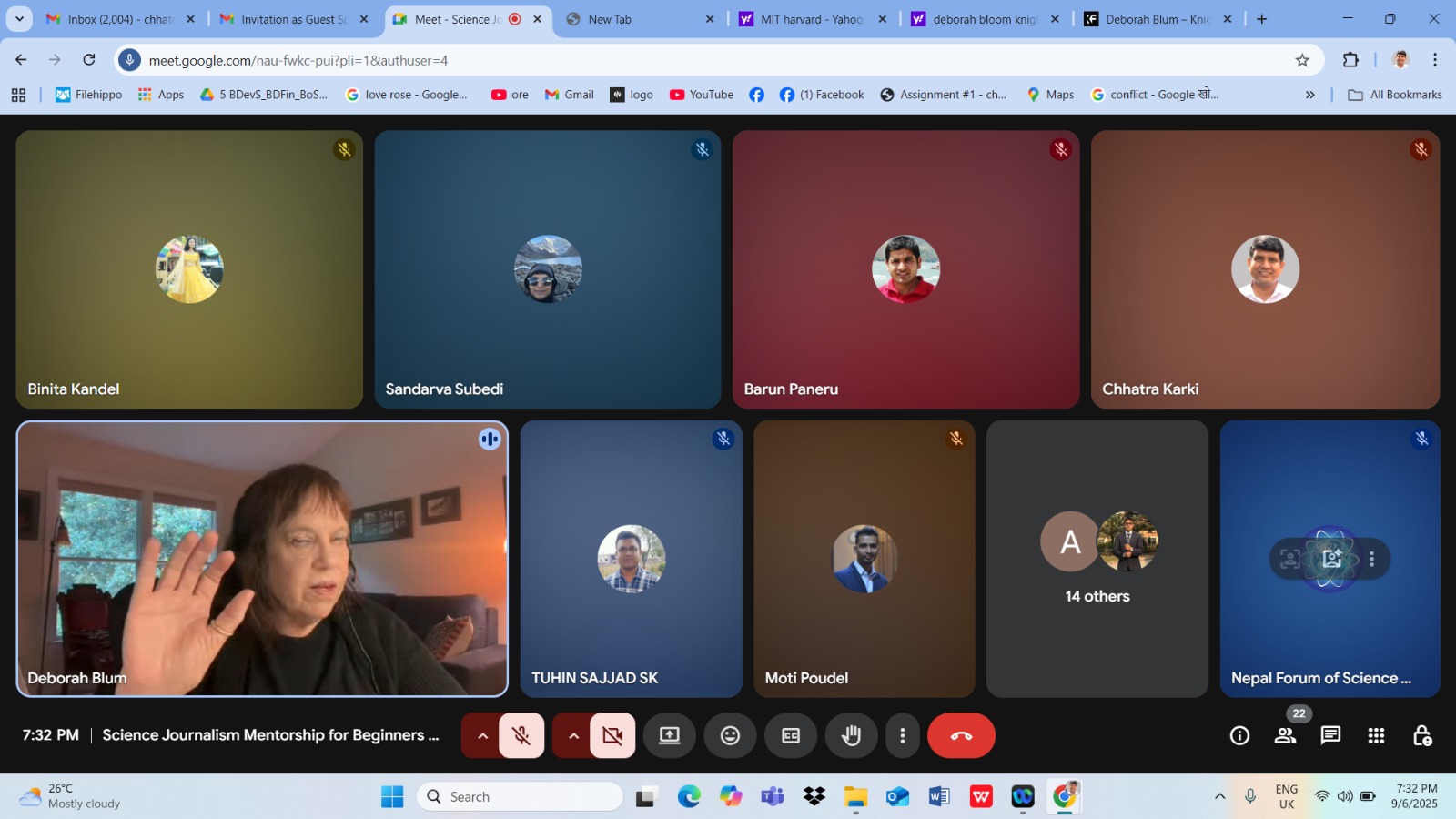
Crafting a Compelling Pitch to International Editors
–Barsha Gautam, Member of NFSJ
The Nepal Forum of Science Journalists (NFSJ) organized the fourth session of the Science Journalism Mentorship Program for beginners from South Asia on September 6, 2025.
Deborah Blum, a trailblazing voice in science journalism led the incredible session. She is an author, educator, and Pulitzer Prize-winning storyteller whose work has illuminated the ethical, environmental, and chemical undercurrents of our world. She was also the director of the Knight Science Journalism Program at MIT from 2015 to 2025. One of her books include The Poisoner’s Handbook (2010), a New York Times best seller which was also an American Experience documentary film.
The session entitled Crafting a Compelling Pitch to International Editors offered a strategic guide for emerging science writers aiming to bring local stories to global platforms. Her extensive experience emphasizes that science is inherently international and the stories rooted in local contexts, like those from Nepal, India or Pakistan can resonate powerfully with global audiences when pitched effectively.
She outlined the steps of successful pitching,
- knowing our niche i.e., a specific subject matter,
- knowing the publication’s tone, audience, preferred formats, and
- knowing the right editor to approach.
- knowing your story: knowing the theme as well as topic is equally important!
She highlighted the importance of relationship-building with editors through networking, introductions, and participation in pitch sessions as a way to open doors and build trust among the editors. Reading the masthead (editor, managing editor, section editors or contributors) can also be practiced to identify the editor for the pitch. Various narrative structures were also explored from the inverted pyramid to braided storytelling, to choose formats that best serve the story.
A strong pitch, according to her, should include the following five basic elements:
- a compelling opening,
- a clear explanation of why the story matters (“the so-what”),
- a brief summary of the core issue and impact,
- the intended audience, and
- a brief rationale for why YOU ARE THE BEST ONE to do it.
Note: Persistence and professionalism in follow-ups were also advised as well as pitching multiple stories while tailoring each one carefully was encouraged.
Her message was both practical and motivational. With the right tools, strategy, and voice, we can shape global conversations around science stories.